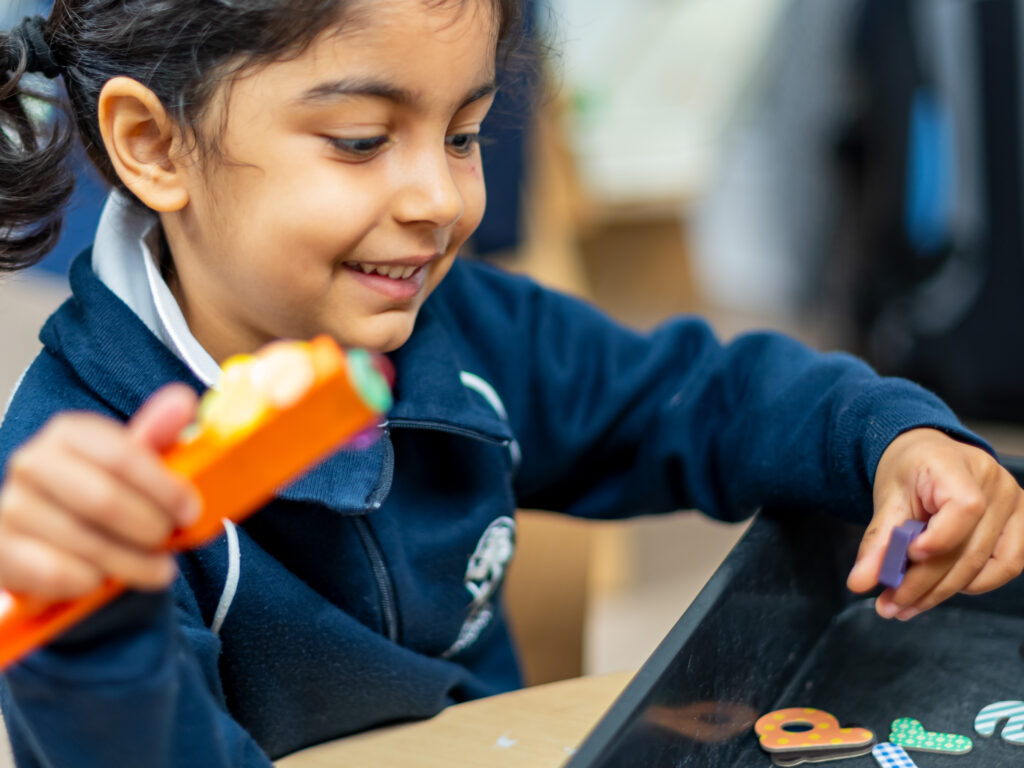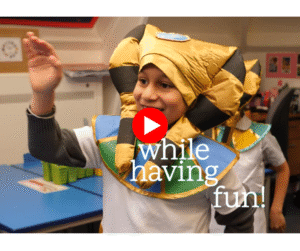Mrs Szpakowski, Head of Nursery at Devonshire House Preparatory School
At a recent parent meeting I was asked ‘when was phonics introduced in UK schools?’ I had no idea – I feel like it’s been here forever. In fact, it was only rolled out nationally in 2006. Now, phonics (the method used to teach children the relationship between letters and the 44 sounds they make in the English language), is an essential component of reading tuition.
However, phonics is not where learning to read begins. In fact, it is the end of a long, fascinating and burgeoning awareness of many literary components.
Logic implies that the earlier a child learns to match and blend letters and sounds, the quicker they’ll learn to read. Why not give them that head-start? Get them to that end goal quickly so that they’re ahead of the game? But teaching phonics before children have some fundamental building blocks is like feeding them solid food before they have developed the capability to chew, let alone the desire to try new flavours. It’s not necessary, and worse, it can significantly impact a child’s enjoyment, confidence and self-esteem. No one wants a three-year-old to feel frustrated, overwhelmed, or inadequate. If learning to read begins with the tedious task of memorizing abstract concepts — such as letter shapes and sounds — without understanding where they fit in, it’s difficult to imagine a child wanting to begin to read, much less enjoying it later on in school. After all, there’s a long way to go…
‘It takes about 10 years of instruction, dedication and practice to become a reasonably skilled reader’ Kathy Rastle, 2022
As teachers, we want to inspire children to become passionate, life-long readers. The way to ensure that a child really has the head-start they need, is to teach them the elements of pre-phonics, phonological and phonemic awareness. These elements are central to learning how to decode and spell printed words. Teaching them explicitly to young children can avoid all kinds of reading and spelling issues in the future.
Phonological awareness is an overarching term describing the ability to acknowledge and manipulate parts of spoken language on several levels (sentence, word, syllable and single sound). Examples include being able to rhyme, hear initial sounds, segment a sentence into words, identify the syllables in a word, and blend and segment chunks in words (e.g., ‘ing’, ‘ed’, etc.). Phonemic awareness is an advanced aspect of phonological awareness and is the ability to isolate, think about, and manoeuver individual sounds (phonemes) in spoken words. This includes blending sounds into words, segmenting words into sounds, and deleting and playing with the sounds in spoken words. It is the final step before phonics (which relates the sounds to the physical image of letters – grapheme).
Imagine a child between the age of three and four gearing up to learning how to read. They’re just beginning to be able to concentrate and sit still for short periods of time – and this is effortful. It takes physical strength, stamina and executive functioning skills. They’re learning how to be around their peers, and are eager to make friends but are not yet able to regulate their emotions to the extent required to cooperate fully. They’ve only recently learned to speak (a 3-year-old has a vocabulary of about 1000 words) but they can understand more than they can say. They’ve been exposed to a wide range of sounds all around them (from motorbikes to buzzing bees), but they’ve never been taught how to ‘tune in’ to those sounds. They’ve also not had enough experience differentiating environmental noises (an important skill required later when learning to distinguish sounds like ‘sh’ and ‘ch’ in words). They have heard speech but they don’t really know where one word ends and the next one begins – in fact, what is a word, or a letter, for that matter? – Is it the same as a number? Is it something you hear or see or form on paper?
Teachers of 2–4-year-olds have the means to guide children gently through the unsettling pre-reading stage to become confident, fluent readers. We do this by implementing the following comprehensive system (which can be re-visited at any time in order to support less confident readers):
Progression to Learning Phonics
Teaching reading to young children follows a step-by-step process that lays the foundation for phonics instruction in Reception. The five steps overlap, with new vocabulary, conversation practice, and reasoning skills integrated throughout.
Step 1 – Pre-phonics
Here, children learn auditory discrimination: recognizing, remembering and talking about sounds around. We ‘play’ with words and language to help children remember and hear similarities and differences in words. They are encouraged to explore objects and shapes and talk about their properties. This visual and tactile discrimination helps children to remember the form, sounds and names of letters later on.
Step 2 – Listening, Attention, and Concentration
At this early stage, children begin to develop an interest in music and the spoken language. They learn about books and how reading works, (e.g., that we read from left to right in English), and engage in story-telling and musical activities. They extend their visual skills by matching noises and sounds, as well as discussing, sorting, and matching shapes and objects. None of this can be achieved until children have gained the self-regulation skills necessary to sit and concentrate for suitable amounts of time.
Step 3 – Phonological Awareness
Children take part in rhythm and rhyming activities – songs, and stories with a beat, etc. They repeat movement and sound patterns in order to improve their sensitivity to the rhythm of speech. Nursery rhymes are a valuable resource at this stage, as they exaggerate and repeat predictable rhythms. This supports a child’s ability to spot ‘word boundaries’ in spoken language. The rhymes help children learn that sounds can match (later, they learn that these matching sounds are linked to spelling patterns).
Step 4 (And the final step before Phonics) – Phonemic Awareness
Fun activities supporting alliteration help children to hear and match the initial sounds in words (a first step to ‘oral blending and segmenting’ – see later), We also teach children how to deconstruct words into their component syllables. Armed with this crucial skill, children are more likely to absorb concepts such as morphology and syntax later in school. This ability to ‘chunk’ words will make learning to read so much easier and more pleasurable. For example, once a child can hear that ‘elephant’ has three syllables we know that they are on their way to being ready to hear the three individual sounds (or phonemes) in a Consonant Vowel Consonant (CVC) word like ‘dog’.
Perhaps the most significant element of Phonemic awareness is the ability to orally blend and segment words. Oral blending is the ability to hear each sound in a word and put them together to form the whole word. Oral segmenting is a pre-requisite to writing – a child must be able to ‘deconstruct’ the word in their head, identifying each sound individually.
To conclude, phonological awareness is a key ingredient in providing a solid, foundational introduction to reading. Skipping this vital stage is not a ‘fast track’ to success. Becoming a reader is a gradual journey. Let’s allow our children the opportunity to enjoy each phase of the process so that they come to a full appreciation of reading and literature.
Phonological awareness in children, especially in the early stages of reading, improves and accelerates learning to read, and at the age of six it is a strong predictor of their future reading ability’. Phonological Awareness as a foundation of reading Acquisition (Milankov et al, 2021)
References:
The Foundation Stage Forum Ltd.
The Education Endowment Fund Blog: The Reading Comprehension House and Foundations that Support Word Reading (May 2020)
Separating Fact from Fiction in Early Reading – Tooled UP (Staff CPD) by Professor Kathy Rastle, May 15 2022



